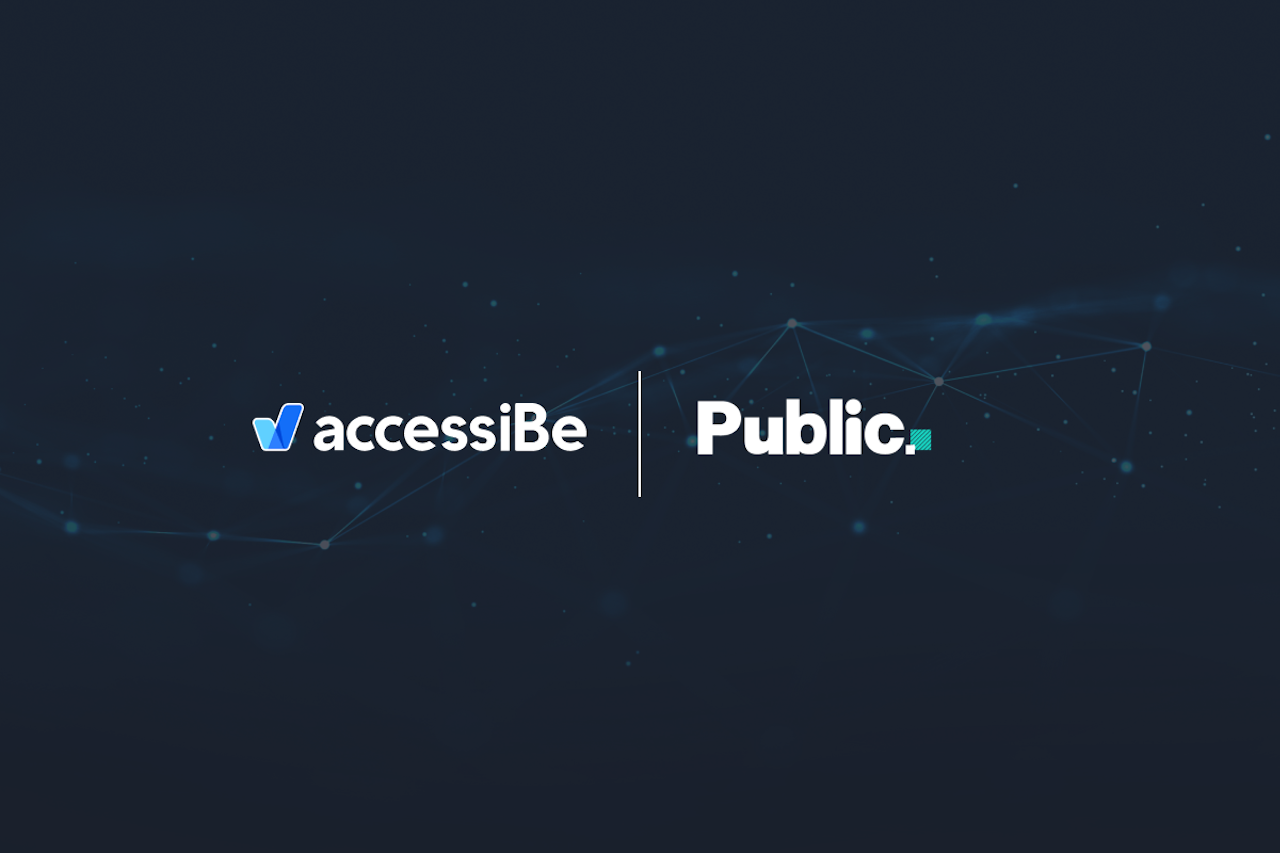accessiBe
The #1 In AI Web Accessibility Solutions and Services For Businesses Of All Sizes
Skills
Clients
Sector Experience
accessiBe Success Story: Public Advertising Agency

Together with IT Central Station, we ask Drew Harill, President at Public Advertising Agency, to share his experience with accessiBe. See how we help them make their clients’ websites accessible and compliant.
What is our primary use case?
I resell accessiBe, there's a script that we pay for and usually, it's for the sites that have less than a thousand pages or not. There are three flavors, one that's 1,000, one that's 10,000 to 100,000, and then another one. We're using the lower end because none of our sites have that large of a page count. We had been looking for an ADA compliant solution for a while. Some of our clients are represented in large public spaces and we wanted to mitigate any exposure that they may have to get sued by people who are looking for non-compliant sites. I stumbled upon accessiBe and tried it out.
It's interesting because we actually had one of our clients who we put accessiBe on. I received a letter from an attorney stating that they weren't compliant. We worked with accessiBe and they gave us all the documentation to make those guys go away. It was pretty awesome.
They were headhunting in restaurants in San Diego and they sent them to multiple folks that were part of the restaurant association and my client happened to be one of those. One website ended up having to pay close to around $30,000 just to make them go away. Our client was privy to that information and was very worried, but I worked with accessiBe. They gave us all the documentation and we provided it to their attorneys. It was nice that their attorneys actually hired us to put the same solution on their site after the case was solved. The whole experience was pretty awesome.
Anytime that someone's looking for an ADA compliant solution, accessiBe is the tool that we utilize.
How has it helped my organization?
With accessiBe, we don't worry about getting sued. At the end of the day, that's really what it's for protecting our clients. The other piece is that it enables our site to be usable by people with disabilities. As a developer, it's very important that the sites that we put together have this functionality so that our clients can sleep easily and feel as though they are protected. The accessibility statement button helps the organization by showing that you've taken time to have your site accessible. So that accessibility statement is one of the requirements of the accessibility act. It just helps. It's one of those further things that help you to be compliant.
What is most valuable?
The most valuable feature is that it actually does what it says. At the end of the day, it makes the website accessible. If someone with a disability is cruising your site, it enables them to navigate your site without any issues. The coolest feature that really sold me was the fact that you didn't have to have alt tags on your images in order for the solution to put an alt tag that was descriptive enough to robots to let them know what an image represents. That was pretty cool.
The solution is visible to everyone, so you can position whatever you'd like on the screen. Most of the time we put it on the bottom left-hand side. And so people can see visibly that it has the tool there, but if you happen to have a device, you just press tab, tab, and it automatically pulls up accessiBe's toolset.
It's important for the organization for accessiBe to be visible because you can then hopefully stop an attorney who's looking to sue you. It'll stop them in their tracks to see that a site has some sort of ADA compliance and they'll move on as someone who does not. But people with disabilities don't necessarily need to have it visible because by pressing tab, tab on their machines, it'll automatically activate it. It enables us to use it to choose among templates with one click that immediately customizes our site for their particular disability. There are shortcuts where you can display the toolset that would be most useful for a particular disability.
It makes the user experience much easier. I have not had an experience with a person who lives with a disability utilizing the tool so I can't really speak to how they navigate the site, but I do know that acccessiBe has built this toolset so that it's very easy and it is compliant with most of the latest requests from the Disability Act. Therefore, I would assume that the usability is pretty cool.
Users are enabled to tweak it to however is going to suit them. For example, if you're colorblind, you can go in there and select the option to show your content in a way that a person who is colorblind can differentiate different segments of your site.
For how long have I used the solution?
I have been using accessiBe for two years.
What do I think about the stability of the solution?
The stability is great. I haven't had any issues with it.
What do I think about the scalability of the solution?
It gives us the ability to say that we offer it and they can say no. So, we could scale it as much as we want. Right now we have around 20 users. We use it on websites like restaurant websites, we have county-driven websites, conventions, and visitor's bureaus. We have a lot of festivals that we represent. We always recommend getting this plugin placed for large, public-facing entities.
The only maintenance that I have to keep up with regards to accessibility is making sure that we pay our annual bill. It's true plug-and-play. I have not had an issue where it is interfered with or has not played nicely with other solutions that we may implement on a website. Every client that comes through our doors has the option to utilize the service and we'll continue to do that.
Which solution did I use previously and why did I switch?
We previously used a manual solution. We chose accessiBe because of its ease of use. Also, it decreased our exposure. As a developer, if you're hired to implement ADA compliance on a website and if somewhere down the road that site falls out of compliance, you could be on the hook if someone does sue them. Now you can be brought in as a developer who stated that this site was compliant and you could go to court and all that kind of stuff. That piece is huge for us.
We're able to sleep at night, for the clients who I felt had the most potential exposure to getting potentially sued, they're now under this ADA compliance, which is huge.
How was the initial setup?
We are programmers so it was easy for us to implement it into our site as well as our clients' sites.
The setup was very easy. It was around five minutes. From a developer's point of view, it's a matter of taking a copy of the one line of JavaScript code and placing it into the footer and it's ready to rock and roll.
The only other thing that we do is we will customize it to meet the colors and the branding of the client. Within the script, there are opportunities for us to change the colors, change links, and that type of stuff. It depends on if we have that code ready and we just change it based on the colors of the client and the brand.
It seemed as though it works fairly instantaneously. With that being said, I think that they send something within 24 to 48 hours that states that your site is now compliant.
It has a scan and there are robots that go to your page and make sure that you're compliant.
I wouldn't want them to prematurely let me know that it was compliant.
What was our ROI?
I have seen return on investment to the degree that I'm able to resell it. And so we make a profit for implementation. It's such a good tool we don't even mark it up. We implement it and we pay for implementation.
What's my experience with pricing, setup cost, and licensing?
Pricing is very easy to present. We can just say that we know a client who got sued and they had to pay $40,000. This solution is less than $40 a month. So this is what you're going to do.
It's like insurance. There are no additional costs to the standard licensing.
Which other solutions did I evaluate?
We looked at a couple of other options. There were some WordPress plugins that we saw were available and they do about 60% of what accessiBe does. Implementing those solutions would not give me the peace of mind that I was looking for.
What other advice do I have?
accessiBe is a no-brainer. When you look at the compliance that it has, it's not just tailored for one disability. I think that's like WCAG and a few others. There's really no excuse why you shouldn't implement this on your site.
When you're initially looking at this, you're looking at an expense of $400 to $500 per website that you implement it on. In the grand scheme of things, that is not even money. For a lot of web developers, if they're looking at a cost or a solution that they have to implement, they see that as a big price tag. But at the end of the day, that is a major cost saver for you. It's not only a financial cost but mental cost savings for you as well.
I would rate accessiBe a ten out of ten.
Begin your web accessibility journey now with accessiBe’s partnership program for agencies. Book a free demo with an expert and gain a free web accessibility license for your agency today.


